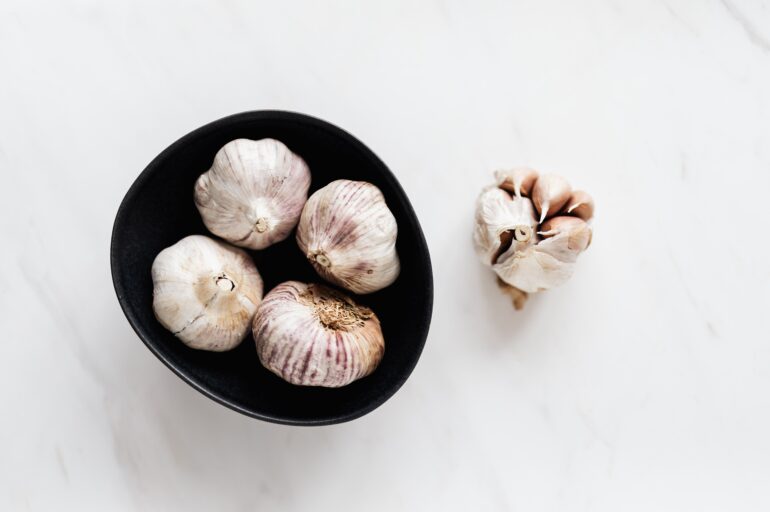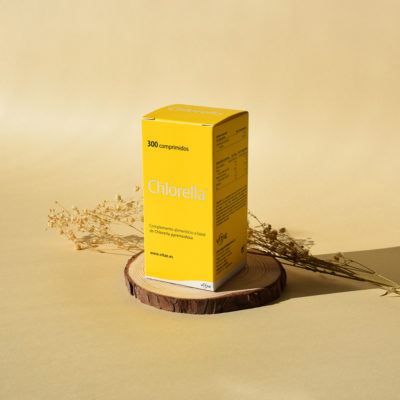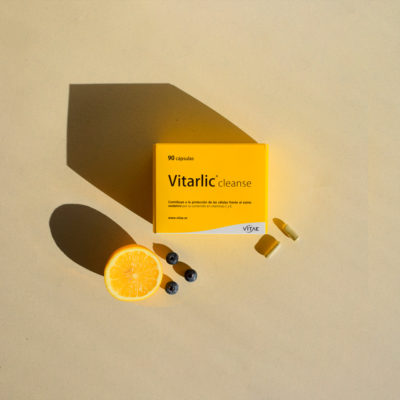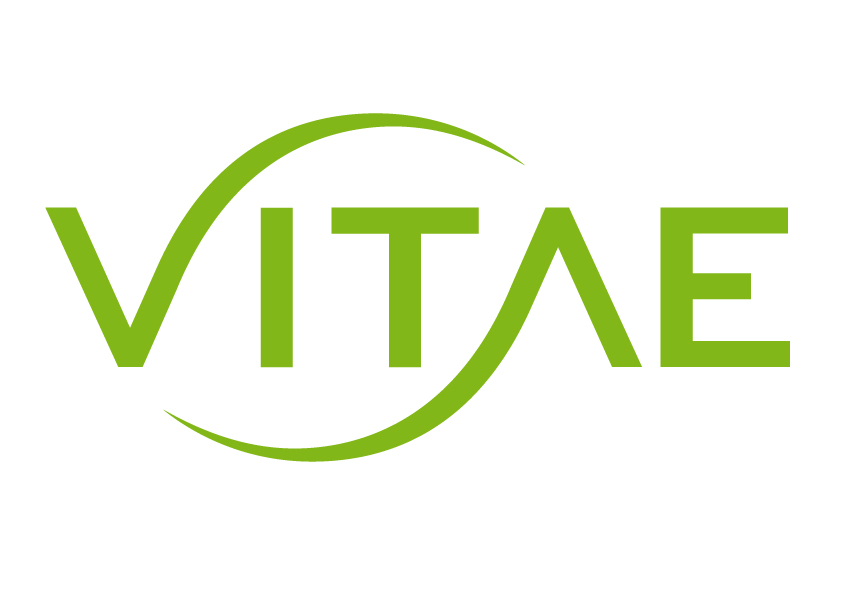Nonalcoholic fatty liver disease (NAFLD) has emerged as a major public health concern worldwide, affecting a wide range of populations. Amid this growing concern, aged garlic has emerged as a promising natural agent in the fight against this condition. With its unique properties and long history of use in traditional medicine, aged garlic has become an intriguing approach to addressing the challenges associated with NAFLD. This article written by our technical director, Luisa Varela, explores in detail the therapeutic potential of aged garlic and its crucial role in the management and prevention of non-alcoholic fatty liver disease.
Aged garlic: properties and benefits in the field of health
Garlic bulbs ( Allium sativum ) have been used in traditional medicine, in raw or cooked form, for many years and are currently included in the formulation of supplements in the form of tablets, capsules or pharmaceutical tablets. Its main active ingredient is allicin or S- allylcysteine. Aged garlic extract (AGE – Aged Garlic Extract ), which is created from garlic aged for at least 20 months, has more stable active compounds than most raw or cooked forms. Since 1955, consuming garlic supplements in this form appears to confer the greatest health benefits and the absence of adverse effects.
Aged garlic extract, supported by scientific studies
Numerous clinical studies have been conducted using AGEs as supplementation, and the greatest clinical efficacy has been linked to blood pressure reduction. A 2020 meta-analysis, which analyzed 12 randomized controlled trials (553 hypertensive individuals) with treatments of at least 2 months, demonstrated a mean decrease of 8.3 mm Hg in systolic blood pressure and 5.5 mm Hg in diastolic arterial blood pressure (1).
Other clinical effects of AGE are related to its possible lipid-lowering effect and its role in glucose reduction. Its effect on the immune system has also been studied, although in this field the results have not been entirely consistent. Yes, a clear decrease in cholesterol and glucose has been observed. A 2013 meta-analysis of 39 randomized controlled trials (2,298 participants) found that AGE lowered total cholesterol by 17 mg/ dL (0.4 mmol /L) and LDL by 9 mg/ dL (0.2 mmol /L) ( 2). Another 2015 meta-analysis of 7 studies (513 participants) has verified the effectiveness of AGE in reducing fasting glucose (3).
Helpful for non-alcoholic fatty liver
Nonalcoholic fatty liver disease is a type of fatty liver that is not related to alcohol consumption.
Nonalcoholic fatty liver disease occurs especially in people between the ages of 40 and 60 who are at high risk for heart disease due to risk factors such as obesity and type 2 diabetes. The condition is also closely linked to metabolic syndrome, a group of abnormalities that include increased abdominal fat, poor ability to consume insulin, high blood pressure and high levels of triglycerides in the blood.
A randomized placebo-controlled study showed that AGE can improve hepatic steatosis in patients with non-alcoholic fatty liver disease, evidenced by changes in ultrasound scans. Garlic also significantly decreased weight and liver enzymes (4).
Finally, we have included in the review a recent randomized clinical study, in patients with non-alcoholic fatty liver disease, with AGE supplementation for 180 days. At the end of the follow-up, the patients had managed to normalize their blood cholesterol and transaminase levels. Furthermore, ultrasound scans after 6 months of treatment revealed a significant improvement in the progression of the disease with 17% of patients having completely recovered their normal liver function (5).
AGE has been shown to help maintain good cardiovascular and liver health, achieve normal blood pressure and cholesterol levels, and achieve optimal antioxidant and wellness function.
Synergy with other ingredients:
The aged extract is a powerful ingredient, but if we fuse it with other ingredients the action becomes even more powerful. Some of the ingredients are:
- Milk thistle extract (80% Silymarin ): stimulates detoxification pathways, replenishes glutathione levels, stimulates liver regeneration and has hepatoprotective , antihepatotoxic and antioxidant effects.
- Grape seed extract (95% Proanthocyanidins ): increases the antioxidant activity of blood serum.
- Pine bark extract (95% Proanthocyanidins ): increases the antioxidant activity of plasma.
- Green tea: extract with a diuretic effect that increases the antioxidant activity of plasma and protects against oxidative damage.
- Glutathione: this is a natural antioxidant in the body with detoxifying effects that also intervenes in the immune system and maintains the levels of the enzyme glutathione peroxidase (along with selenium).
- Selenium: increases the expression of the enzyme glutathione peroxidase .
- Vitamins A, C and E: these are antioxidant vitamins that protect cells against oxidative damage.
Conclusions about aged garlic:
In summary, aged garlic, particularly in aged extract form, has proven to be a valuable tool in the fight against non-alcoholic fatty liver. Its therapeutic benefits supported by scientific studies include reducing blood pressure, controlling glucose levels and lowering cholesterol. In addition, its detoxifying effect has shown a notable improvement in liver health, especially in non-alcoholic hepatic steatosis. When combined with other powerful ingredients such as milk thistle extract, grape seed, pine bark, green tea, glutathione, selenium and antioxidant vitamins, aged garlic shows exceptional synergy in protecting and promoting liver and antioxidant health in general. With the growing challenge of NAFLD, aged garlic promises to be a key tool in the strategy to address this public health concern worldwide.
We thank Lluisa Varela for writing this very interesting article.
References
- Ried K: Garlic lowers blood pressure in hypertensive subjects, improves arterial stiffness and gut microbiota: a review and meta-analysis. Exp Ther Med 19(2):1472-1478, 2020. doi:10.3892/etm.2019.8374
- Ried K, Toben C, Fakler P: Effect of garlic on serum lipids: an updated meta-analysis. Nutr Rev 71(5):282-299, 2013. doi : 10.1111/nure.12012
- Hou LQ, Liu YH, Zhang YY: Garlic intake lowers fasting blood glucose: meta-analysis of randomized controlled trials. Asia Pac J Clin Nutr 24(4):575-582, 2015. doi : 10.6133/apjcn.2015.24.4.15
- Soleimani D, Paknahad Z, Rouhani MH: Therapeutic effects of garlic on hepatic steatosis in nonalcoholic fatty liver disease patients: a randomized clinical trial. Diabetes Metab syndr Obes 13:2389-2397, 2020. doi:10.2147/DMSO.S254555.steatotic patients after the application of Vitarlic using hepatic markers of inflammation. Cleanse and Vitarlic Forte. VIT-KYO-2019-01, 2021, Vitae Health Innovation . In files.






